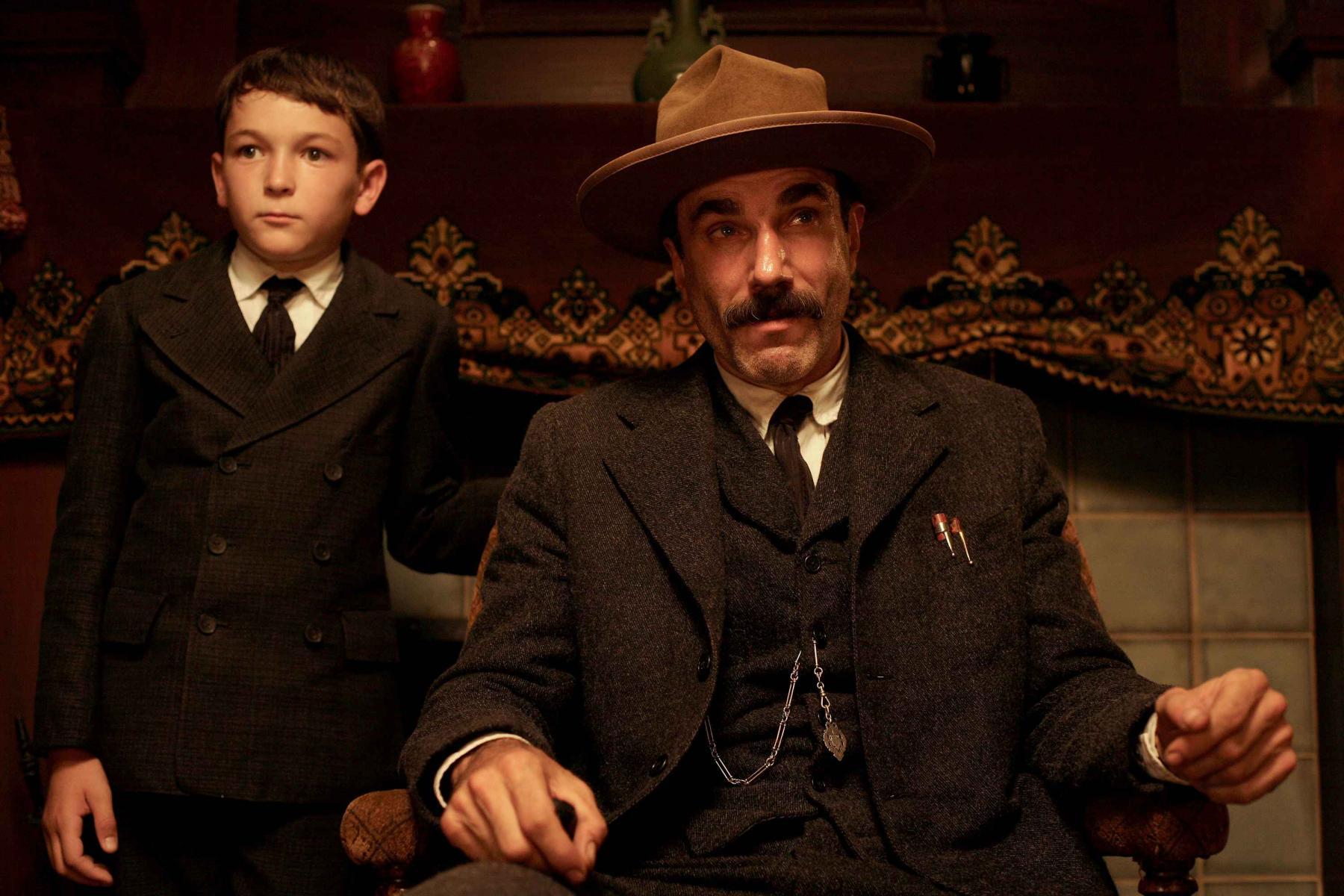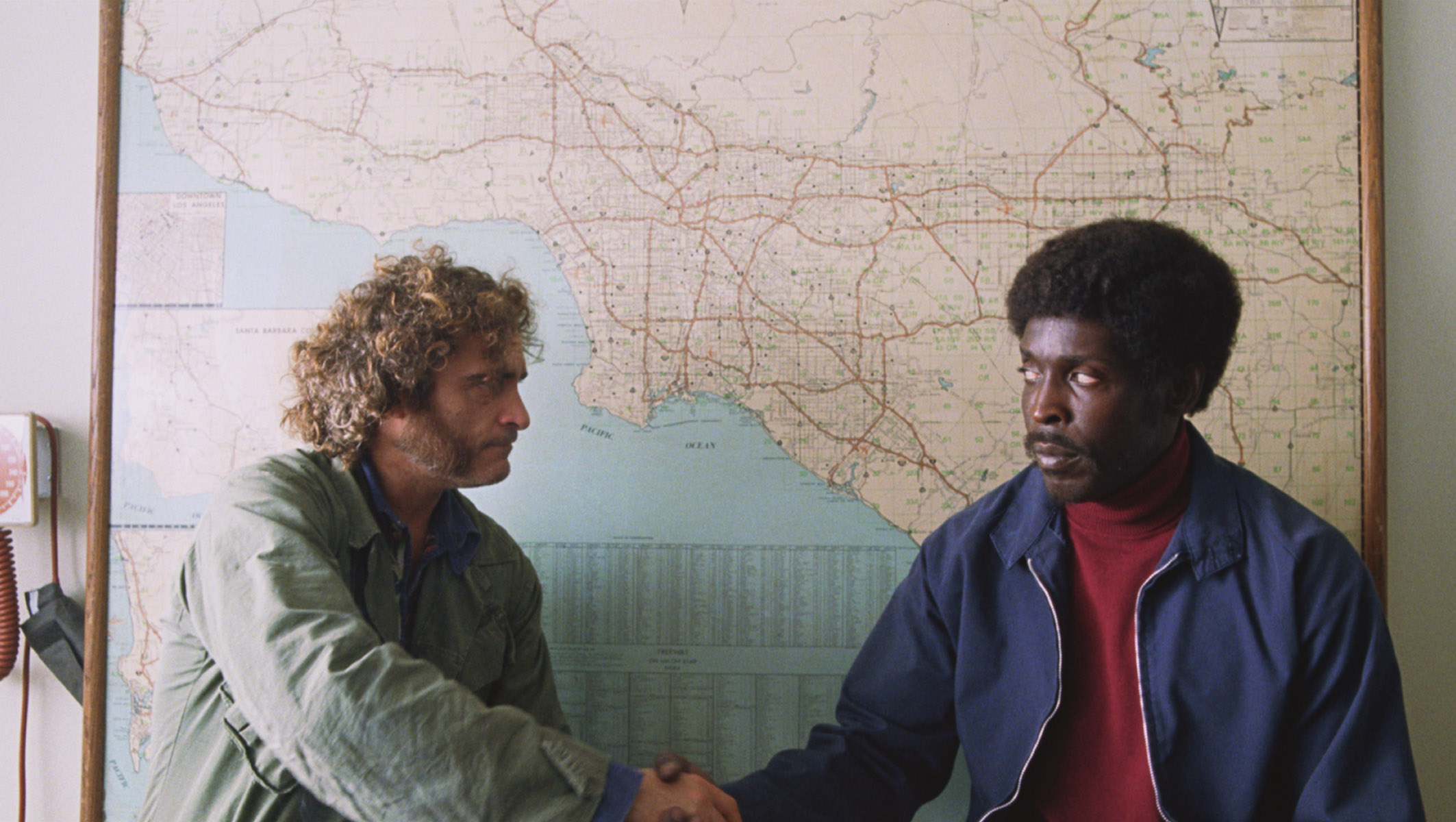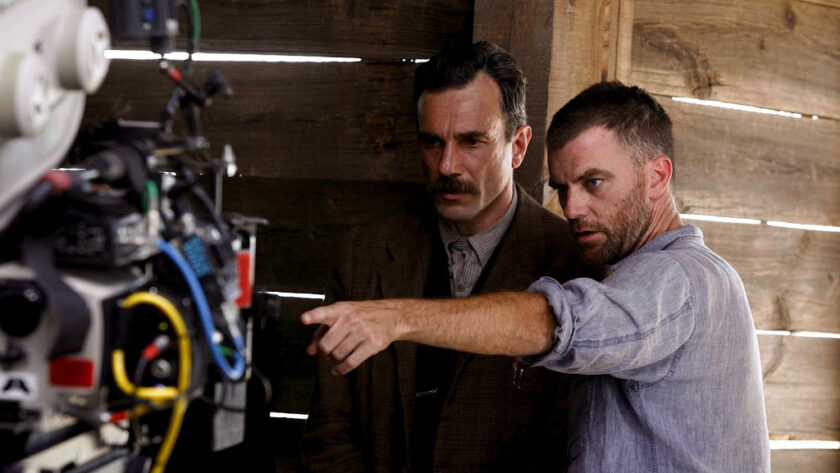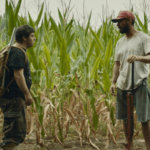Raphael Duhamel runs through Anderson’s impressive career leading up to Phantom Thread.
“We’re all children of Kubrick, aren’t we? Is there anything you can do that he hasn’t done?”
– Interview with The Independent, 2008

Paul Thomas Anderson is no stranger to Kubrickian themes. The filmmaker has always been attracted to larger-than-life stories, and his two most popular works, the epic 1999 drama Magnolia, and the 2007 Oscar-winning There Will Be Blood, both match the 2001 director’s grandiose style and remarkable skill. Throughout his illustrious yet still relatively short career, PTA – as many of his admirers call him – has constantly renewed his approach to storytelling and characterisation, while remaining faithful to his penchant for the themes of loneliness and family, regularly depicting characters who are on the fringe of society.
Most of Anderson’s films are set in California, where he grew up among his father’s videotapes and semi-famous actor friends. The Golden State is an inherent part of the director’s work, imbued with the sunny yet wistful atmosphere of the San Fernando Valley, particularly well reflected in the wandering and hopeful souls of Boogie Nights. Though Anderson is trademarked by his lively direction and supported by quick editing and dynamic camera movement (notably achieved through Steadicam, tracking shots and whip pans), his style has greatly evolved since the days of his first features. Frequently collaborating with cinematographer Robert Elswit, they are both avid users of the anamorphic lenses which are almost always employed to achieve a more cinematic effect with a noticeably shallower depth of field.

Anderson’s first movie, Hard Eight – also known as Sydney – was not shot with an anamorphic lens due to budget restrictions, but already showcases the director’s preoccupations. A rewriting of his Sundance short Coffee and Cigarettes, the 1996 film opens with Sydney (Philip Baker Hall) offering to help John (John C. Reilly), a young lost man looking for enough money to bury his mother. It establishes early on the motif of the absent mother in Anderson’s filmography, as well as the one of surrogate families, since Sydney takes John under his wing, providing him with everything he needs to start anew. Gwyneth Paltrow stars as a cocktail waitress who prostitutes herself to make ends meet, and Samuel L. Jackson features as an unscrupulous antagonistic figure, in this Reno-set neo-noir, shot on location in smoky casinos and sordid hotel rooms. As Anderson’s least known film, Hard Eight qualifies as a hidden gem, more minimalistic than any of his other movies. It does mark the beginning of his significant collaboration with Jon Brion, composer of the gracefully melancholic piece “Clementine’s Loop”, which would also appear in his subsequent film.

Boogie Nights, his 1997 follow-up, was developed during the chaotic post-production process of Hard Eight. Anderson’s anamorphic debut tells the story of Eddie Adams (Mark Wahlberg), a young man realising his dream of becoming a porn star in the San Fernando Valley of the late 70s, taking on the name of Dirk Diggler. A recreation of his own 1988 short mockumentary The Dirk Diggler Story, Anderson’s film takes its inspirations from Robert Altman’s compelling ensemble movies such as Nashville and Short Cuts. The movie’s opening Steadicam scene is a breath-taking combination of virtuosity and craftsmanship, as the camera flows flawlessly around the dancing cast, recalling Altman’s 8-minute opening in The Player. Philip Baker Hall and John C. Reilly return for Anderson, who brings in many new faces in the likes of Julianne Moore, Philip Seymour Hoffman, and William H. Macy. Burt Reynolds makes his grand cinematic comeback as Jack Horner, a director and patriarch at the head of a small pornographic empire, who looks after and cares for Diggler. Boogie Nights explores once again parent-son relationships, as the protagonist’s continual conflict with his mother is alleviated by Julianne Moore’s character, who assumes a surrogate-mother role. Their relationship is still very problematically marked by systematic “incestuous” intercourse, showcasing the era’s sexual frenzy and AIDS-free carelessness. The film ultimately portrays Diggler’s downfall, as he turns away from his friends and sinks into drugs, acting as a cautionary tale on the importance of family.

Magnolia is considered by many, including Anderson himself, as his magnum opus. After Boogie Nights’ success – earning him an Academy Award nomination for Best Original Screenplay – the director had the opportunity to make his passion project come to life in the form of a three-hour-long choral movie, set once again in the San Fernando Valley. Most of Boogie Nights’ cast returns, with the notable inclusion of Tom Cruise, playing a misogynistic motivational speaker. Anderson’s anamorphic lens is more present than ever, in addition to his rapid camera movement and quick editing style, all giving rhythm to the overlapping narratives. The 1999 Golden Bear-winning film features one of recent history’s most famous sequences in the form of a sudden frog rain, a Biblical reference which ties the nine main characters’ stories together, and consequently helps Magnolia’s troubled souls come to terms with their personal problems. This deus ex machina’s sheer ambition demonstrates Anderson’s incredibly confident filmmaking, but it also conveys the movie’s main idea, namely that there is no such thing as coincidence. Most surprisingly, the sequence notably shows Stanley (Jeremy Blackman), a gifted and precocious child who is forced by his father to feature on a game show, watching over the frog rain with a smile, repeating “This is something that happens”. Stanley appears to know much more than the other adults, and especially the audience, who is further confounded after witnessing a previous scene where every main character is shown singing, on their own, Aimee Mann’s “Wise Up”. George Toles expertly analyses this sequence, explaining how Anderson “confronts a crisis of truth telling and attempts to resolve it by replacing speech with music”, an unsurprising feat considering the fifteen music videos (to this date) that he has directed for the likes of Fiona Apple, Radiohead, and HAIM. This succession of two audacious scenes further confirms the director’s artistry, as he breaks conventions and redefines the cinematic medium. Magnolia would also, however, mark the end of an era for Anderson, who considered his epic mosaic as the culmination of his San Fernando Valley chronicles, a resolution that would take him on new and unexpected artistic grounds.


Punch-Drunk Love is probably Anderson’s most idiosyncratic piece. In an effort to challenge himself, the director set out to make a romantic comedy, casting Adam Sandler in one of his best roles to date, as Barry Egan, a neurotic and disturbed novelty supplier who falls in love with Lena Leonard, played by Emily Watson. The movie sticks to rom-com conventions while deviating from them, featuring colourful interludes by artist Jeremy Blake, complemented by Jon Brion’s Hawaii-infused music. The anamorphic lens, favouring blue horizontal lens flares, contributes to Punch-Drunk Love’s binary visual scheme: Barry is only seen in his slightly oversized blue suit, while Lena is mostly shown in a red dress, the colour of passion. The story is a strange yet simple one, as Barry gets scammed by a phone-sex line, headed by a mattress-shop owner, Dean Trumbell (Philip Seymour Hoffman), while he exploits a loophole in pudding offers in order to accumulate frequent flyer miles. The audience clings onto Barry’s child-like behaviour and naivety, embodying the oblivious and innocent lover, in a world ruled by racketeers and criminals who take advantage of his solitude, as he mistakes sexual desire for love. Barry is excluded from society – he is rarely seen in the centre of the frame – and his seven emasculating sisters only perpetuate his suffering, reminding him of embarrassing childhood moments when his nickname was “Gay Boy”. Lena, therefore, acts as a welcome maternal presence, echoed by the recurring song “He Needs Me”, taken from Altman’s Popeye. Anderson’s film was a critical success, earning him Best Director at the 2002 Cannes Film Festival, but it barely recovered its budget, impeding greatly the development of his next movie, which would only come five years later.

There Will Be Blood, loosely based on Upton Sinclair’s Oil!, marked the beginning of a new stylistic era for Anderson. After the large-scale experiment that was Punch-Drunk Love, the director matured and delivered, in 2007, what is considered to be one of the best movies of the 21st century. Significantly, none of Anderson’s recurring cast appears in this movie, and features Jonny Greenwood’s music, who would go on to replace Jon Brion as the director’s preferred composer. The Radiohead guitarist’s eerie classical score echoes Kubrick’s flamboyant use of Richard Strauss in 2001: A Space Odyssey, whose beginning sequence is celebrated in There Will Be Blood’s mute opening. Indeed, the film’s first fifteen minutes feature almost no speech, apart from Daniel Plainview’s (Daniel Day-Lewis) groans, as he drags himself through the desert with a broken leg. This opening is a powerful affirmation of cinema’s visual potency, also demonstrating the protagonist’s incredible willpower and unrelenting ambition. Plainview drives the story, shown arriving in California at the turn of the 20th century with his adopted son H.W. (Dillon Freasier) in order to exploit land for oil. Anderson delves into parent-child relationships, portraying Plainview as an unaffectionate father who abandons his son, which ultimately leads to his downfall: once again, those who turn away from their family are punished. Plainview’s trade is also significant, since his incessant search for underground resources allegorises his own hidden origins, which the audience never gets to truly discover. Day-Lewis’ character repeatedly faces Eli Sunday (Paul Dano), the local church’s pastor, determined not to let him exploit the land freely. This conflict leads to memorable confrontations between the two, such as when Plainview is forced to confess, in church, that he has abandoned his child. There Will Be Blood was both a critical and commercial success, with a particularly resonating political message in the wake of the Iraq War, and it signified the beginning of Anderson’s steadier, more cerebral direction, aided once again by cinematographer Robert Elswit, who went on to win one of the movie’s two Oscars.


The Master perpetuates the filmmaker’s stylistic evolution, focusing on what has become a familiar Anderson theme of power dynamics in a father-son relationship. Philip Seymour Hoffman returns as Lancaster Dodd, the leader of “The Cause”, a religious movement partly inspired by Scientology, along with Joaquin Phoenix, who plays Freddie Quell, a World War II veteran suffering from PTSD. The movie’s premise resembles Hard Eight’s, since it features a powerful and wealthy mentor taking a vulnerable man under his wing as well. Both characters act as mirror images: Quell has an aggressive and uncontrollable temper, suffering from regular fits of uncontrollable fury, whereas Dodd is a much more reliable figure, with an air of Charles Foster Kane. The Master’s prison scene is a perfect example of that dichotomy, showing Phoenix and Hoffman in adjacent cells, as the former trashes it in an outburst of rage, while the latter stands stoically, waiting to be released. The sequence ends with both insulting each other, but their contrasting behaviour reveals their innate differences, in an opposition as simple as that of the savage versus the civilised. The film’s main female character, Peggy Dodd (Amy Adams), completes the triangle, acting as a steady and orderly figure balancing out her husband and his protégé’s improprieties. For the first time since Hard Eight, Anderson’s trademark anamorphic lens is absent, while Mihai Malaimare Jr. replaced the unavailable Elswit as cinematographer, privileging 65mm for the majority of the movie to attain a better image resolution – an extremely rare yet judicious choice, which greatly influenced camera movement, due to the device’s sheer size. The Master won the Silver Lion at the 2012 Venice Film Festival, while also earning Academy Award Nominations for each member of its exceptional trio.

Anderson’s 2014 adaptation of Thomas Pynchon’s Inherent Vice is an enigmatic piece. It has perplexed critics and audiences alike, who have found it to be an imperfect yet enjoyable addition to the director’s filmography. The movie follows Doc Sportello (Joaquin Phoenix), a stoner and private detective, as he investigates the disappearance of his ex-girlfriend Shasta (Katherine Waterston) in 1970s Los Angeles. Inherent Vice notably marks Anderson’s return to ensemble casts: the film stars Joanna Newsom, Benicio Del Toro, Owen Wilson, Jena Malone, Martin Short, and Reese Witherspoon, all contributing to the confused and marijuana-infused Californian atmosphere. The story expands to an incomprehensible extent, as Phoenix’s character teams up with Lieutenant Bigfoot (Josh Brolin), a stern, old-school cop from the post-war era, whose temper contrasts with Sportello’s nostalgic 60s hippie spirit. Their shared enemy is a mysterious criminal organisation called the “Golden Fang”, which is surrounded by vague conspiracies, greatly contributing to the film’s paranoid post-Manson killings atmosphere. Inherent Vice’s puzzling narrative proves to be a double-edged sword, since it captures incredibly well Pynchon’s idiosyncratic voice and story – Anderson was nominated at the Oscars for Best Adapted Screenplay – while also challenging audiences’ expectations, and therefore possibly spoiling their enjoyment of the movie. The filmmaker’s looser direction, featuring a lot of handheld camera movement, suits the story and setting, as well as Elswit’s grainy cinematography, who returned to shoot Inherent Vice on 35mm. The movie also features many instances of slapstick comedy, usually including Sportello in comical situations, and complemented by Jonny Greenwood’s ever-present distinctive score, punctuated by classic rock pieces such as Can’s “Vitamin C” playing in the background of the opening as the green neon title appears onscreen.
Phantom Thread sees Paul Thomas Anderson exploring new territory, as he leaves the United States for 1950s London, in what is supposed to be Daniel Day-Lewis’ final role. It is inspiring to witness such an accomplished director in a constant quest for the renewal of his craft, and his nomination at the upcoming Academy Awards, whatever the outcome may be, further cements his place as one of the 21st century’s greatest directors.
Phantom Thread is out now in UK cinemas. It is nominated for Best Picture at upcoming 2018 Academy Awards, and in the fields of Lead Actor, Supporting Actress, Original Score, and Costume Design. Paul Thomas Anderson is nominated for Best Director.




